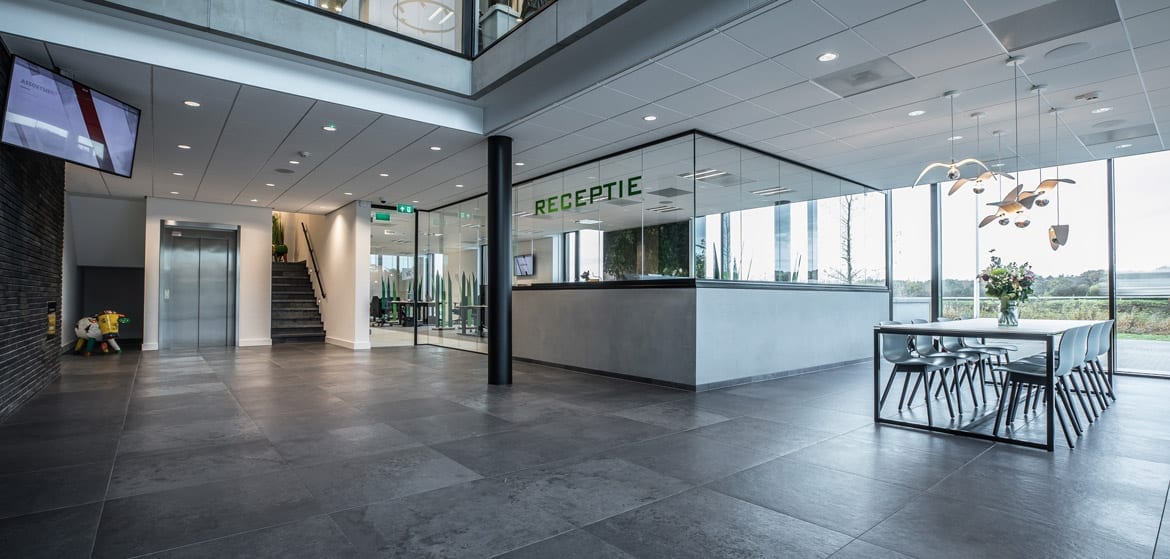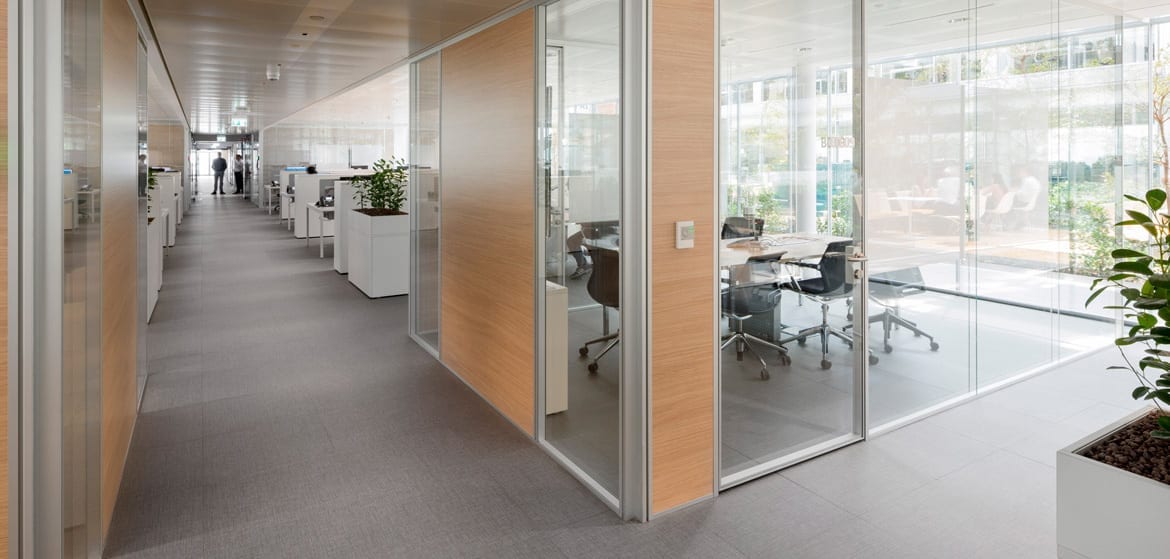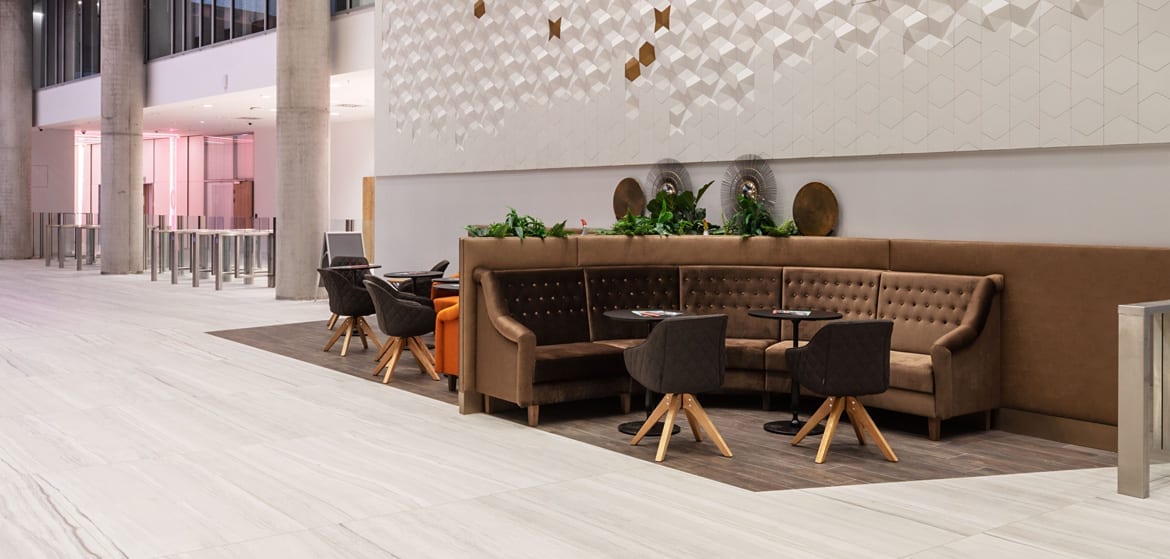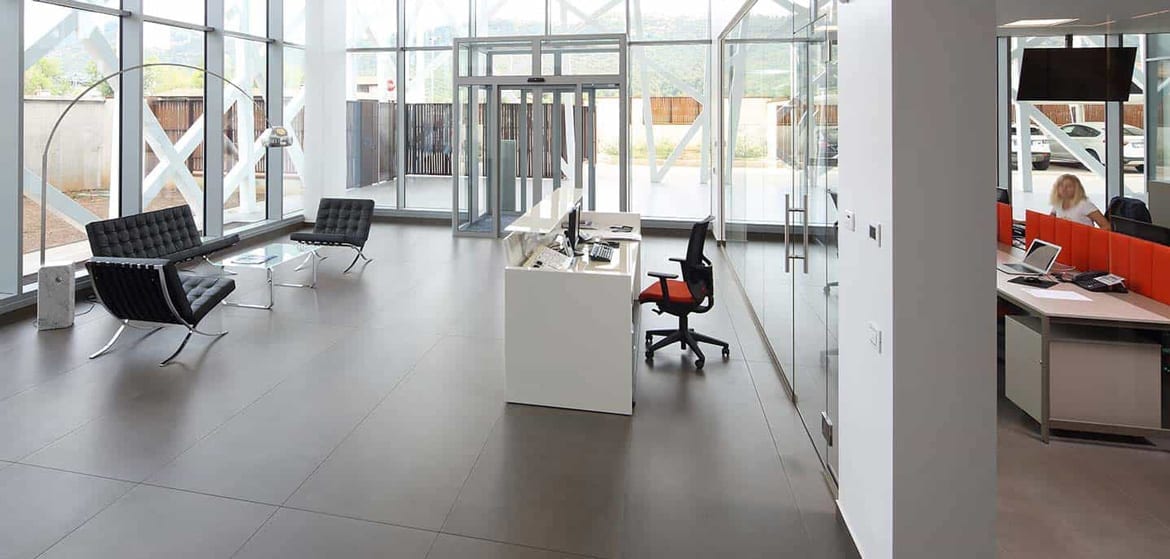Projects


Ceramic, the queen of business areas | by Karina Kharebova
The profound cultural changes that are taking place in the world of work are increasingly blurring the boundaries between working time and free time and fuelling the rise of phenomena such as job insecurity, freelancing and telework. These changes have a direct impact on the design of modern offices and corporate spaces, while the fact that working activities are increasingly being conducted outside specific locations raises doubts about whether or not physical spaces are actually necessary. But despite the growing number of coworking spaces and cafes used as offices, some types of activities remain closely linked to traditional workplaces, making it necessary to rethink and improve the way they are organised. The common image of companies as inflexible organisations unconcerned about any need not directly related to business is becoming anachronistic given the ever greater focus on employee well-being. A comfortable working environment helps boost productivity and therefore merits special attention from architects.
Well-designed aesthetic qualities help create an atmosphere that is conducive to cooperation, creativity and efficiency on the part of both individuals and the company as a whole, while at the same time strengthening the company’s image. Along with the products and services supplied, a visit to the company’s premises to discuss business can also influence the customer’s opinion of the company. For this reason it is very important to design the work spaces carefully and to choose the materials that are most representative of the company’s values and aspirations. Ceramic tiles have many obvious advantages and offer an astonishing array of solutions for creating elegant and at the same time highly functional offices.


Status is also a key factor in the business world, which means it is essential for bank branches and insurance company offices to convey an image of reliability, security and respectability. Ceramic sums up these characteristics perfectly. As one of the oldest materials used by mankind, it is no coincidence that it has been widely adopted for the most prestigious buildings, such as cathedrals and the homes of the ruling classes. Through the ages it has been renowned for its nobility and reliability: only the finest raw materials were chosen to represent sacredness and power. Centuries later, tiles continue to enjoy the same reputation and consistently satisfy users’ expectations in terms of strength and resistance, properties that have allowed this material to stand the test of time and win universal approval.
The reliability of ceramic is reflected above all in its ability to withstand intense loads, making it ideal for high-traffic locations such as offices. It is also resistant to mechanical damage and thermal shock, guaranteeing that tiling will retain its original appearance and beauty for years. And even in the unlikely event of a small section of tiling suffering damage and needing replacement, the problem is easily resolved simply by removing the damaged portion and installing new tiles. Because ceramic tiles are so widely used, it takes little time to find a similar product to the one that needs replacing and install a fragment that is indistinguishable from the rest of the tiling. Installation of the new tiles requires very limited technical resources, tools and time, a fundamental requirement for environments where it is essential to avoid disrupting the routine and work of employees, visitors and the business as a whole.
These factors – a high concentration of people and the need to ensure operational continuity – make it essential to choose a material that does not have any special maintenance requirements. While carpet must be cleaned regularly and stains removed immediately and the more expensive types of natural stone must be polished constantly to maintain their original beauty, with ceramic tiles these operations are unnecessary. All they need is a simple wash with detergents and disinfectants.


The fact that ceramic tiles offer a wide variety of aesthetic qualities makes them ideal for working environments, which by their nature are highly heterogeneous. In conference rooms and rest areas, for example, pale coloured glossy tiles can be chosen to make the room look bright and elegant and to enhance the sense of space. Likewise, in areas set aside for receiving visitors, neutral coloured tiles are recommended to avoid distracting clients and staff during business discussions. In service areas such as bathrooms and kitchens, present in almost every workplace, more modest tiles can be used while ensuring the same degree of reliability. Tiles are wear-resistant and waterproof and also represent a valid solution for the green spaces that are now present in all offices and business centres and create a pleasant place to spend a relaxing and restorative lunch break.
Since all companies have their own unique corporate identity, another successful application may be to decorate offices in the brand’s corporate style. Ceramic tiles are ideal for collaboration and experimentation and can be used in many different combinations of colours, forms and shapes capable of stimulating creativity. They can also be used to decorate walls with a large number of designs. Although classic, regular patterns are often preferable for offices, it is nevertheless possible to create more complex customised compositions that symbolise the corporate aesthetic. Regardless of the type of decoration chosen, tiles always meet needs of any complexity and provide millions of successful entrepreneurs with a comfortable and stylish space in which to conduct their business.
See other examples of ceramic tiling in Business locations in the Project Gallery.
March 2020




